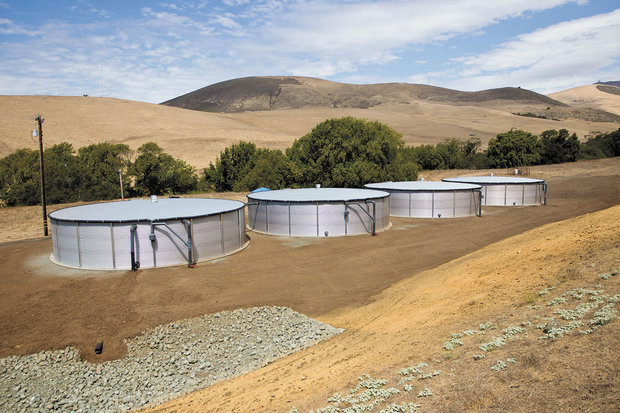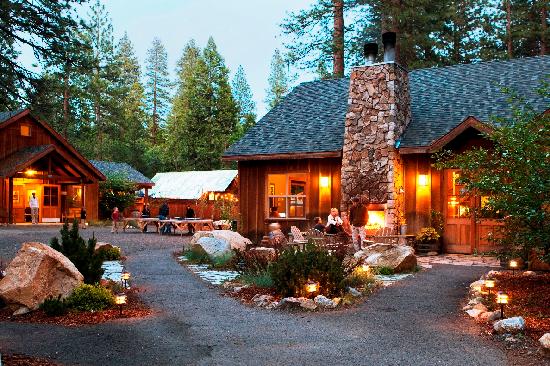
This is a follow-up post to the “One drop, a dozen options” article in the Summer 2015 Mono Lake Newsletter. The article mentions longtime Mono Lake Committee member Regina Hirsch and her business Sierra Watershed Progressive with respect to the greywater system she helped us create in 2012. But there are a ton of awesome projects that Regina and Sierra Watershed Progressive have tackled and I wanted to highlight two of them here:
Cal Poly rainwater catchment

Cal Poly–San Luis Obispo has a site with 190 cattle inland of Morro Bay in the Chorro Valley as part of their Animal Science Department. The site is nestled between two creeks, Dairy and Pennington creek. Dairy Creek was being polluted with runoff from the cattle and Pennington Creek (a notable steelhead stream) was seasonally strained as a water resource. A rainwater catchment system with a capacity to store 308,000 gallons now collects rainwater from the shade houses and nearby structures on the property (14,774 square feet). Capturing the water decreases runoff pollution in Dairy Creek while simultaneously decreasing water demands on Pennington Creek.
Evergreen Lodge greywater system
Evergreen Lodge, located just outside the western boundary of Yosemite National Park, is currently reusing 2.8 million gallons of water every year with their greywater system. Shower water and laundry water is filtered and used for landscaping in the immediate area as well as for the nearby hardwood forest. That means 2.8 million gallons less in the septic system and less water needed for landscaping.

These two projects demonstrate an important point about water conservation in California. Both represent two very different parts of California, which is reflected by their different strategies of saving water, but both organizations will be better equipped to face drought conditions in the future. It’s this type of case-by-case planning and development that will be key for California businesses and industry alike to reduce the state’s water demand. And with careful planning, these efforts can be designed to help other ecological systems as well.
